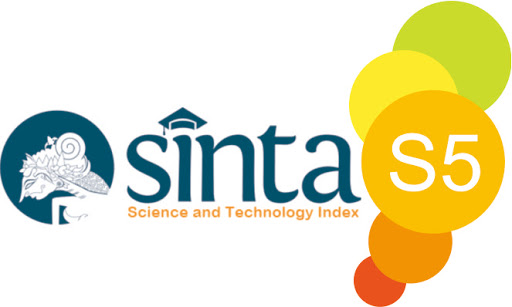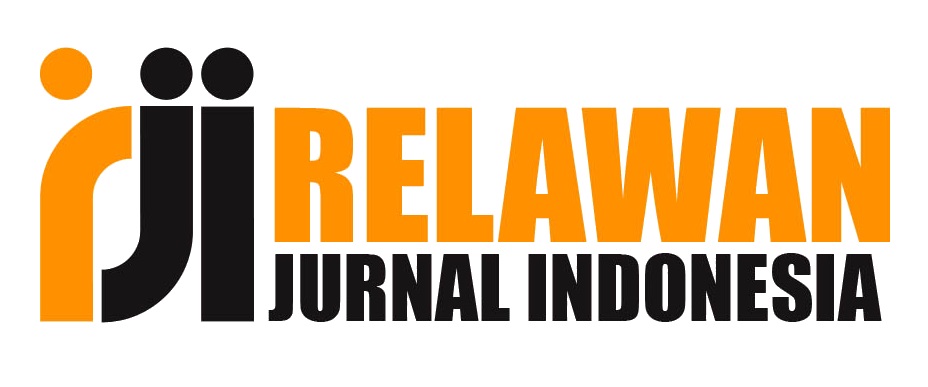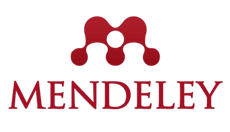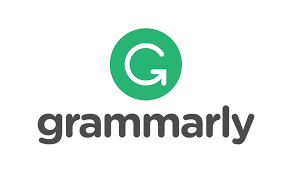Optimizing Students' Ability in Understanding and Producing Recount Texts through Discovery Learning
DOI:
https://doi.org/10.57176/jn.v5i1.165Keywords:
classroom action research, discovery learning, recount text, text comprehensionAbstract
Penelitian ini bertujuan untuk menerapkan model Discovery Learning di kelas XC SMAN 3 Pamekasan untuk meningkatkan pemahaman dan kemampuan siswa dalam menulis teks recount. Metode penelitian ini menggunakan Penelitian Tindakan Kelas (PTK), yang diadaptasi oleh Kemmis dan McTaggart. Sebanyak 31 siswa dari kelas XC SMAN 3 Pamekasan menjadi subjek dalam penelitian ini. Penelitian ini dilakukan dalam dua siklus yang terdiri dari perencanaan, tindakan, observasi, dan refleksi. Observasi, dokumentasi, dan tes tertulis digunakan untuk mengumpulkan data. Hasil penelitian menunjukkan bahwa kemampuan siswa mengalami peningkatan pada siklus I yaitu sebesar 24,81 poin atau 46,49%, dengan nilai rata-rata pretest 53,38 menjadi 78,19. Namun pada siklus II nilai rata-rata menurun menjadi 76,59. Penurunan ini terjadi sebesar 1,60 poin atau -2,05%, namun meskipun terjadi penurunan, masih ada peningkatan dari pre-test sebesar 43. Penurunan ini disebabkan oleh faktor internal dan eksternal. Sebagian besar 51% dipengaruhi oleh faktor eksternal, yang terjadi di dalam kelas pada saat post test karena pada saat post test bertepatan dengan adanya razia handphone siswa sehingga secara langsung mempengaruhi mood dan fokus siswa dalam mempersiapkan diri menghadapi tes. Oleh karena itu diperlukan pengelolaan kelas yang ketat dan inovatif selama pembelajaran dan penilaian untuk meminimalisir gangguan dari luar.
_____________________________________________________________________________________
This study aims to apply Discovery Learning model in class XC SMAN 3 Pamekasan to improve students' understanding and ability to write recount text. This research method used was Classroom Action Research (CAR), which was adopted by Kemmis and McTaggart, 31 students from class XC SMAN 3 Pamekasan became the subjects in this study. The research was conducted in two cycles consisting of planning, action, observation, and reflection. Observation, documentation, and written tests were used to collect data. The results showed that the students' ability increased in cyicle I and there was an increase of 24.81 points or 46.49%, with the average pretest score of 53.38 to 78.19; however, in cycle II, the average score dropped to 76.59 the decrease is 1.60 points or -2.05% but despite the decrease, there is still an increase from the pre-test of 43.51% This decrease was caused by external factors, which occurred in the classroom at the time of the post test because at the time of the post test it coincided with a cellphones raid that directly affected the mood and focus of students in preparing for the test. herefore rigorous and innovative classroom management is required during learning and assessment to minimize external distractions.
References
Alya Audria, & Zaitun Qamariah. (2023). Evaluation of English Language Policy In The Education System In Indonesia. PUSTAKA: Jurnal Bahasa Dan Pendidikan, 3(4), 211–223. https://doi.org/10.56910/pustaka.v3i4.729
Ariani, E. D. (2023). An Analysis of Students’ Difficulties in Writing Recount Text. Jurnal Simki Pedagogia, 6(1), 169–180. https://doi.org/10.29407/jsp.v6i1.229
Azhar, I., Konvensional, M., Bacaan, M., & Inggris, B. (2024). Metode pembelajaran dan implikasinya terhadap keterampilan pemahaman teks bacaan bahasa inggris. 7(November), 97–104.
Castronova, J. A. (2002). Discovery Learning For The 21st Century: What Is It And How Does It Compare To Traditional Learning In Effectiveness In The 21st Century? Action Research Exchange, 1(1), 1–12.
Education, E. (2020). The Representation of Global Competence in a Senior High School English Textbook in Indonesia. 16, 1–21. https://doi.org/10.35445/alishlah.v16i3.5299
Hernanda, V. A., Yasyfa, A., Alfarisy, F., Asing, B., Vokasi, S., & Diponegoro, U. (2022). Jurnal Indonesia Sosial Teknologi : p – ISSN : 2723 - 6609 Pengaruh Penerapan Bahasa Asing Dalam Kinerja Pendidikan Abstrak Pengaruh Penerapan Bahasa Asing dalam Kinerja Pendidikan Pendahuluan Jurnal Indonesia Sosial Teknologi , Vol . 3 , No . 2 , Februar. 3.
Keguruan, F., Ilmu, D. A. N., & Dahlan, U. A. (2019). Jurnal Penelitian Tindakan Kelas Disusun Oleh : Epriliana Rifanty Pembelajaran Kooperatif Tipe Make A Match Pada Peserta. Jurnal JPSD, X No X Tah, 1–6.
Kemdikbudristek. (2022). capaian pembelajaran fase E bahasa inggris kurikulum merdeka. In 2022.
Mauliska, N., & D’Angelo, J. F. (2024). the Importance of Learning English At School. Interling : International Journal of English Language Teaching, Literature and Linguistics, 2(2), 53–57. https://doi.org/10.55210/interling.v2i2.1793
Nengsih, E., Zazifah, N., & Asrizal. (2023). Penerapan Model Discovery Learning dengan Diskusi Kelompok Materi Recount Text untuk Meningkatkan Aktivitas dan Hasil Belajar Kelas X SMA N 1 Payakumbuh. 7(4), 792–802.
Nisa, C. K., & Apsari, Y. (2024). Teaching Writing Using Discovery Learning. PROJECT (Professional Journal of English Education), 7(2), 276–280.
Purnamasari, A., & Argawati, N. O. (2020). the Use Discovery Learning Method in Teaching Writing Recount Text To the Tenth Grade of Sman Ngamprah. PROJECT (Professional Journal of English Education), 3(4), 470. https://doi.org/10.22460/project.v3i4.p470-476
Rosnija, E. (2024). The Use of Discovery Learning Method to Teach Reading Narrative Text. 4778. https://doi.org/10.24256/ideas.
Sánchez, L. F., & Lopez-Pinzon, M. (2019). The Effect of the Process-Based Approach on the Writing Skills of Bilingual Elementary Students. Latin American Journal of Content & Language Integrated Learning, 12(1), 72–98. https://doi.org/10.5294/laclil.2019.12.1.4
Santoso, A. (2016). Persepsi Mahasiswa Terhadap Program Talkshow Mata Najwa Di Metro TV (Study Deskriptif Kuantitatif Pada Mahasiswa LPM Pabelan UMS Terhadap Mata Najwa Periode 18 November 2015 - 15 Maret 2016). Publikasi Ilmiah, November 2015, 17. http://eprints.ums.ac.id/46212/1/Naskah Publikasi.pdf
Suciani, R. N., Azizah, N. L., Gusmaningsih, I. O., & Fajrin, R. A. (2023). Strategi Refleksi dan Evaluasi Penelitian Tindakan Kelas. Jurnal Kreativitas Mahasiswa, 1(2), 114–123.
Supena, I., Darmuki, A., & Hariyadi, A. (2021). The Influence of Learning Model on Students’ Learning Outcomes. International Journal of Instruction, 14(3), 873–892.
Surabaya, U. N., & Curriculum, F. (2024). Analysis of Recount Text Written by Junior High School Students Based on Freedom Curriculum ( Kurikulum Merdeka ) Nabilah Aminatussholihah Hidayati Abstrak. 12(03), 30–35.
Syariah, K. B., & Ilmu, G. (2020). Prosedur Pelaksanaan Penelitian Tindakan Kelas (Ptk). 3(september 2016), 1–6.
Utomo, P., Asvio, N., & Prayogi, F. (2024). Metode Penelitian Tindakan Kelas (PTK): Panduan Praktis untuk Guru dan Mahasiswa di Institusi Pendidikan. Pubmedia Jurnal Penelitian Tindakan Kelas Indonesia, 1(4), 19. https://doi.org/10.47134/ptk.v1i4.821
Downloads
Published
How to Cite
Issue
Section
License
Copyright (c) 2025 Liatun, M. Iqbal Alibi, Nur Imamah Yuliatin, Chairatul Umamah, Raziqah, Muhammad Jusak

This work is licensed under a Creative Commons Attribution-ShareAlike 4.0 International License.
You are free to:
- Share — copy and redistribute the material in any medium or format for any purpose, even commercially.
- Adapt — remix, transform, and build upon the material for any purpose, even commercially.
- The licensor cannot revoke these freedoms as long as you follow the license terms.
Under the following terms:
- Attribution — You must give appropriate credit , provide a link to the license, and indicate if changes were made . You may do so in any reasonable manner, but not in any way that suggests the licensor endorses you or your use.
- ShareAlike — If you remix, transform, or build upon the material, you must distribute your contributions under the same license as the original.
- No additional restrictions — You may not apply legal terms or technological measures that legally restrict others from doing anything the license permits.
Notices:
You do not have to comply with the license for elements of the material in the public domain or where your use is permitted by an applicable exception or limitation .
No warranties are given. The license may not give you all of the permissions necessary for your intended use. For example, other rights such as publicity, privacy, or moral rights may limit how you use the material.
















